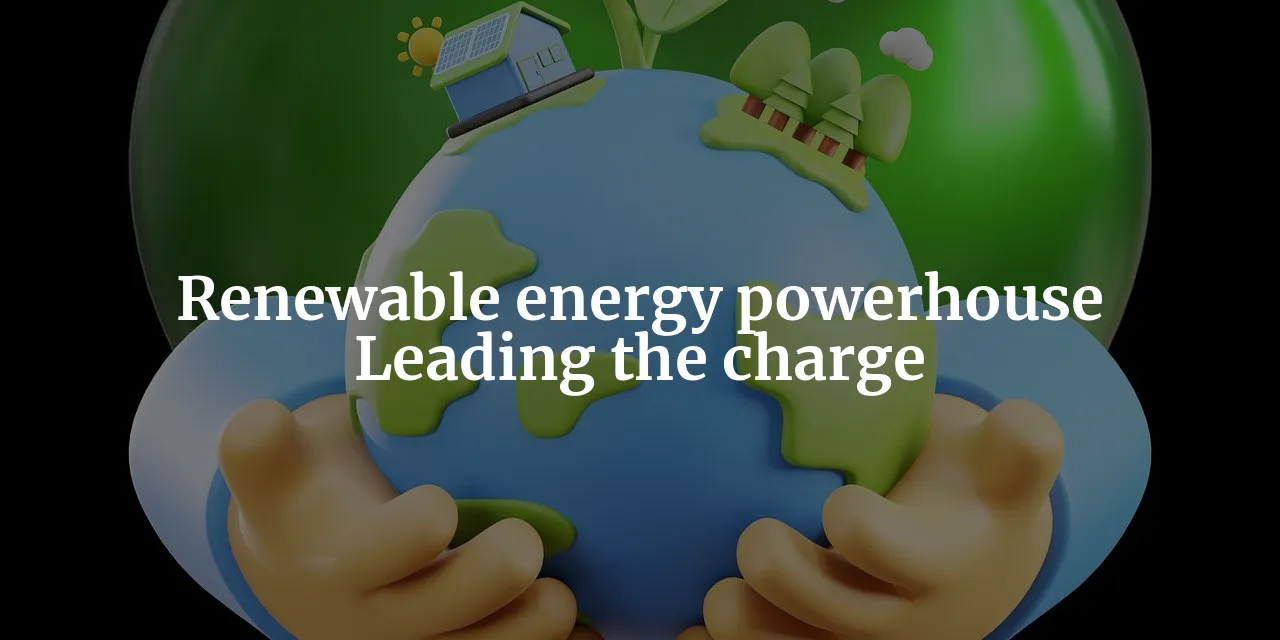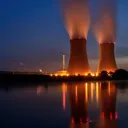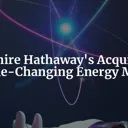Tags: BHE
This fanpage is not officially affiliated with Berkshire Hathaway: Disclaimer
Berkshire Hathaway Energy, a subsidiary of Warren Buffet's Berkshire Hathaway, is leading the charge in renewable energy production. The company is rapidly shifting its power mix to wind and solar, closing coal-fired plants and reducing its carbon emissions by 27% since 2005. Berkshire Hathaway Energy's commitment to reducing carbon emissions is evident in its efforts to increase renewable energy production. However, Warren Buffet and the company have faced criticism from ESG investors who argue that they are not moving fast enough to prepare for the future. The company is facing increasing pressure from investors to disclose more information on how it manages climate risks.

Introduction
Berkshire Hathaway Energy, a subsidiary of Warren Buffet's Berkshire Hathaway, has been making significant strides in renewable energy production. As the world continues to shift towards sustainable energy sources, Berkshire Hathaway Energy has been leading the charge by investing in wind and solar power projects. This article will explore the company's efforts to reduce carbon emissions, its recent milestones in renewable energy production, and the pressure it faces from investors and regulators to disclose more information on climate risks. For shareholders of Berkshire Hathaway, understanding the company's commitment to a sustainable future is essential in making informed investment decisions.
The Rise of Renewable Energy
The global shift towards renewable energy has been driven by the need to reduce carbon emissions and mitigate the impacts of climate change. Governments and corporations worldwide have been investing in clean energy projects, with solar and wind power becoming increasingly popular choices. As a major player in the energy sector, Berkshire Hathaway Energy has been contributing to this trend by rapidly shifting its power mix to wind and solar.
Berkshire Hathaway Energy's commitment to reducing carbon emissions is evident in its efforts to increase renewable energy production. The company has closed 16 coal-fired plants and reduced its carbon emissions by 27% since 2005, putting it well on track to meet its target of a 50% reduction by 20301. This target will be further supported by the announced closing plans for 16 more coal plants1. As a result, Berkshire Hathaway Energy is on track to soon generate 45% of its power from renewable sources, exceeding the 21.5% that the government reports all utilities generated in 20221.
Berkshire Hathaway Energy's Renewable Energy Milestones
Berkshire Hathaway Energy has achieved several significant milestones in renewable energy production ↗. The company's electricity production from renewable sources is on track to surpass the recent national average and come close to half of all power generation1. This progress is a testament to the company's commitment to investing in clean energy projects and reducing its carbon footprint.
The company's plans to shift to wind and solar power have been instrumental in achieving these milestones. By investing in renewable energy projects, Berkshire Hathaway Energy is not only contributing to the global effort to combat climate change but also positioning itself as a leader in the sustainable energy sector. The company's target of reducing carbon emissions by 50% by 2030 further demonstrates its commitment to a greener future1.
Warren Buffet's Record on Climate Change
Despite Berkshire Hathaway Energy's progress in renewable energy production, Warren Buffet and the company have faced criticism from ESG investors who argue that they are not moving fast enough to prepare for the future1. These investors have focused on Buffet's record on climate change, pointing to the company's mix of utilities, reinsurance companies, shipping coal on its Burlington Northern railroad, and investments in oil stocks as evidence of insufficient action.
In response to this criticism, Berkshire Hathaway faces three different shareholder resolutions demanding better disclosure of climate risks1. These resolutions highlight the growing pressure on the company to be more transparent about its efforts to manage climate risks and transition to a low-carbon economy. As investors become increasingly concerned about the long-term impacts of climate change on their investments, companies like Berkshire Hathaway Energy will need to demonstrate their commitment to sustainable practices.
The Wind Prime Project
One of the key projects that showcase Berkshire Hathaway Energy's commitment to renewable energy is MidAmerican Energy's Wind PRIME project, which has been approved by the Iowa Utilities Board2. This project will add 2,042 MW of wind energy and 50 MW of solar energy to the company's portfolio2. The Wind PRIME project is a significant step towards MidAmerican's goal of providing 100% renewable energy to Iowa customers through its GreenAdvantage program2.
The Wind PRIME project is notable not only for its contribution to renewable energy production but also for its potential to benefit customers. The project can be developed at no net cost and will result in an electric rate decrease for all customers2. This demonstrates that investments in renewable energy can have both environmental and economic benefits, making them an attractive option for companies like Berkshire Hathaway Energy.
MidAmerican's Motion for Reconsideration
Following the approval of the Wind PRIME project, MidAmerican filed a motion requesting modification to maximize customer benefits2. This motion was supported by a settlement agreement filed jointly by the Office of Consumer Advocate, Iowa Business Energy Coalition, and MidAmerican2. The agreement includes performance guarantees to ensure efficient and cost-effective generation for renewable projects2.
The Iowa Utilities Board has 30 days to respond to the motion for reconsideration2. If approved, the modification would further enhance the benefits of the Wind PRIME project for customers and contribute to MidAmerican's goal of providing 100% renewable energy to Iowa customers through its GreenAdvantage program2. This demonstrates Berkshire Hathaway Energy's commitment to not only investing in renewable energy projects but also ensuring that these projects deliver maximum benefits to its customers.
Pressure for Change
Berkshire Hathaway Energy is facing increasing pressure from investors to disclose more information on how it manages climate risks1 ↗. Investors such as Illinois and CalPERS are among those requesting more information on climate risks and management1. While Berkshire Hathaway argues that it already discloses enough information on climate risks1, the growing demand for transparency may eventually force the company to provide more detailed disclosures.
Shareholder votes in favor of climate disclosure proposals have been increasing in recent years1, indicating a growing concern among investors about the potential impacts of climate change on their investments ↗. As a result, Berkshire Hathaway Energy may be forced to disclose more information due to upcoming state and federal regulations on insurance and securities disclosure1. This increased scrutiny may ultimately lead to more significant action on climate change from the company.
Conclusion for Shareholders of Berkshire Hathaway
Berkshire Hathaway Energy's renewable energy production and commitment to a sustainable future have significant implications for the company's shareholders. As the world continues to shift towards clean energy sources, companies that invest in renewable energy projects and demonstrate a commitment to reducing carbon emissions will likely be better positioned to succeed in the long term.
However, the pressure faced by Berkshire Hathaway Energy to disclose more information on climate risks and management highlights the growing concern among investors about the potential impacts of climate change on their investments.
Shareholders of Berkshire Hathaway should closely monitor the company's response to these demands and assess its efforts to address climate risks and transition to a low-carbon economy. Transparency and disclosure will be key indicators of the company's commitment to sustainable practices and its ability to adapt to a changing energy landscape. As renewable energy becomes increasingly important in the global energy mix, Berkshire Hathaway Energy's progress in renewable energy production positions it as a leader in the sustainable energy sector. By investing in clean energy projects and reducing its carbon footprint, the company is not only contributing to the fight against climate change but also potentially enhancing its long-term value for shareholders.
References











